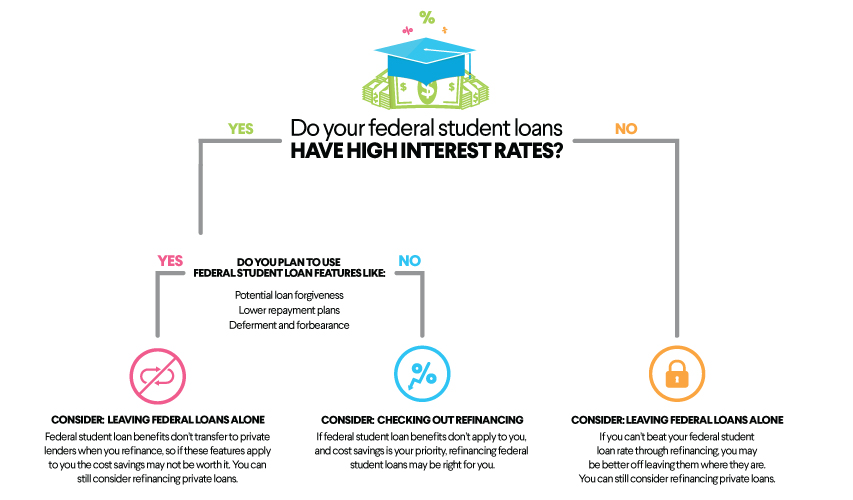Understanding Seller Concessions
Buying a new home requires managing a lot of moving parts, from mortgage preapproval to closing. Even after an offer is accepted, buyers and sellers are still at the negotiating table. If closing costs or surprise expenses become too much for the buyer, a seller concession could help seal the deal.
Although seller concessions can work to a buyer’s advantage, they are neither a guaranteed outcome nor a one-size-fits-all solution for every real estate transaction.
To determine if seller concessions are the right move from a buyer’s perspective, here are some key things to know, including what costs they can cover and when to consider asking for them.
Note: SoFi does not offer seller concessions at this time.
Key Points
• Seller concessions help buyers cover closing costs, including prepaid expenses and discount points.
• Concessions differ from price reductions, and buyers don’t receive them as cash.
• The maximum amounts allowed for concessions can vary by loan type and whether the property is an investment or a residence.
• Some typical seller’s concessions include expenses like property taxes, appraisal fees, loan origination fees, homeowners insurance costs, attorney fees, and title insurance fees, among others.
• Asking for seller’s concessions might result in a higher overall purchase price or in the seller rejecting the offer altogether.
What Are Seller Concessions?
Seller concessions represent a seller’s contribution toward the buyer’s closing costs, which include certain prepaid expenses and discount points. A seller concession is not the equivalent of a price reduction; nor is it received as cash or a loan discount.
Closing costs usually range from 2% to 5% of the loan principal on your mortgage. When that’s combined with a down payment, the upfront expense of buying a home can be burdensome, especially for first-time homebuyers.
Buyers can ask for concessions on the initial purchase offer or later if the home inspection reveals problems that require repairs.
Although this can be a helpful tool to negotiate a house price, there are rules about eligible costs and limits to how much buyers can ask for.
Recommended: Homebuyer Guide
What Costs Can Seller Concessions Cover?
A buyer’s closing costs can vary case by case. Generally, buyers incur fees related to the mortgage loan and other expenses to complete the real estate transaction.
There are also types of prepaid expenses and home repairs that can be requested as a seller concession.
Some common examples of eligible costs include the following:
• Property taxes: If the sellers have paid their taxes for the year, the buyer may be required to reimburse the sellers for their prorated share.
• Appraisal fees: Determining the estimated home value may be required by a lender to obtain a mortgage. Appraisal costs can vary by geography and home size but generally run between $300 and $400 for a single-family home and a conventional loan.
• Loan origination fees: Money paid to a lender to process a mortgage, origination fees, can be bundled into seller concessions.
• Homeowners insurance costs: Prepaid components of closing costs like homeowners insurance premiums can be included in seller concessions.
• Title insurance costs: A title insurance company will search to see if there are any liens or claims against the property. This verification, which varies widely in price, but generally costs between 0.1% to 2% of the loan principal, protects both the homeowner and lender.
• Funding fees: One-time funding fees for federally guaranteed mortgages, such as FHA and VA loans, can be paid through seller contributions. Rates vary based on down payment and loan type.
• Attorney fees: Many states require a lawyer to handle real estate closings. Associated fees can run from about $750 to $1,250 or more, based on location.
• Recording fees: Some local governments may charge a fee to document the purchase of a home.
• HOA fees: If a home is in a neighborhood with a homeowners association, there will likely be monthly dues to pay for maintenance and services. A portion of these fees may be covered by the seller.
• Discount points: Buyers may pay an upfront fee, known as a discount point, to lower the interest rate they pay over the life of the mortgage loan. (The cost of one point is typically 1% of the loan amount and may lower your mortgage rate by as much as 0.25%.)
• Home repairs: If any issues emerge during a home inspection, the repair costs can be requested as a seller concession.
Closing costs can also be influenced by the mortgage lender. When shopping for a mortgage, evaluating expected fees and closing costs is a useful way to compare lenders. Factoring in these costs early on can give buyers a more accurate idea of what they can afford and better inform their negotiations with a seller.
Recommended: How Much Are Closing Costs on a New Home?
Rules and Limits for Seller Concessions
Determining how much to ask for in seller concessions isn’t just about negotiating power. For starters, the seller’s contributions can’t exceed the buyer’s closing costs.
Other factors can affect the allowable amount of seller concessions, including the type of mortgage loan and whether the home will serve as a primary residence, vacation home, or investment property.
Here’s a breakdown of how concessions work for common types of loans.
Conventional Loans
Guidance on seller concessions for conventional loans is set by Fannie Mae and Freddie Mac. These federally sponsored enterprises buy and guarantee mortgages issued through lenders in the secondary mortgage market.
With conventional loans, the limit on seller concessions is calculated as a percentage of the home sale price based on the down payment and occupancy type.
If it’s an investment property, buyers can only request up to 2% of the sale price in seller concessions.
For a primary or secondary residence, seller concessions can add up to the following percentages of the home sale price:
• Up to 3% when the down payment is less than 10%
• Up to 6% when the down payment is between 10% and 25%
• Up to 9% when the down payment is greater than 25%
FHA Loans
FHA loans, which are insured by the Federal Housing Administration, are a popular financing choice because down payments may be as low as 3.5%, depending on a borrower’s credit score.
For this type of mortgage, seller concessions are limited to 6% of the home sale price.
VA Loans
Active service members, veterans, and some surviving spouses may qualify for a mortgage loan guaranteed by the Department of Veterans Affairs. For buyers with this type of mortgage, seller concessions are capped at 4% of the home sale price.
VA loans also dictate what types of costs may qualify as a seller concession. Some eligible examples: paying property taxes and VA loan fees or gifting home furnishings, such as a television.
Recommended: Guide to Buying, Selling, and Updating Your Home
Seller Concession Advantages
There are a few key ways seller concessions can benefit a homebuyer. For starters, they can reduce the amount paid out of pocket for closing costs. This can make the upfront costs of a home purchase more affordable and avoid depleting savings.
Reducing closing costs could help a buyer make a higher offer on a home, too. If it’s a seller’s market, this could be an option to be a more competitive buyer.
Buyers planning significant home remodeling may want to request seller concessions to keep more cash on hand for their projects.
Seller Concession Disadvantages
Seller concessions can also come with some drawbacks. If sellers are looking for a quick deal, they may view concessions as time-consuming and decline an offer.
When sellers agree to contribute to a buyer’s closing costs, the purchase price can go up accordingly. The deal could go awry if the home is appraised at a value less than the agreed-upon sale price. Unless the seller agrees to lower the asking price to align with the appraised value, the buyer may have to increase their down payment to qualify for their original financing.
Another potential downside is that buyers could ultimately pay more over the loan’s term if they receive seller concessions than they would otherwise. If a buyer offers, say, $350,000 and requests $3,000 in concessions, the seller may counteroffer with a purchase price of $353,000, with $3,000 in concessions.
The Takeaway
Seller concessions can make a home purchase more affordable for buyers by reducing closing costs and expenses, but whether it’s a buyer’s or seller’s market will affect a buyer’s potential to negotiate. A real estate agent can offer guidance on asking for seller concessions.
FAQ
How do you explain seller concessions?
Seller concessions are the costs and fees that a seller may agree to pay on behalf of a buyer to sweeten the deal. These could include expenses like property taxes, appraisal fees, loan origination fees, homeowners insurance costs, attorney fees, title insurance fees, recording fees, funding fees, HOA fees, mortgage point costs, and even repair costs.
Can seller concessions exceed closing costs?
Seller concessions cannot be greater than closing costs. The maximum amount of seller concessions you can get with a given mortgage depends on a number of factors, including the type of loan it is, but the amount will never exceed the amount of the closing costs.
What is the most a seller can pay in closing costs?
The maximum a seller can pay in closing costs depends on the type of mortgage that’s involved. For a conventional loan, the maximum for an investment property is 2% of the sale price. For a primary or secondary residence, it depends on the down payment: up to 3% when the down payment is less than 10%; up to 5% when the down payment is between 10% and 25%; and up to 9% when the down payment is more than 25%. The amount sellers can pay in closing costs is capped at 6% for FHA loans and 4% for VA loans.
SoFi Loan Products
SoFi loans are originated by SoFi Bank, N.A., NMLS #696891 (Member FDIC). For additional product-specific legal and licensing information, see SoFi.com/legal. Equal Housing Lender.
SoFi Mortgages
Terms, conditions, and state restrictions apply. Not all products are available in all states. See SoFi.com/eligibility-criteria for more information.
*SoFi requires Private Mortgage Insurance (PMI) for conforming home loans with a loan-to-value (LTV) ratio greater than 80%. As little as 3% down payments are for qualifying first-time homebuyers only. 5% minimum applies to other borrowers. Other loan types may require different fees or insurance (e.g., VA funding fee, FHA Mortgage Insurance Premiums, etc.). Loan requirements may vary depending on your down payment amount, and minimum down payment varies by loan type.
Financial Tips & Strategies: The tips provided on this website are of a general nature and do not take into account your specific objectives, financial situation, and needs. You should always consider their appropriateness given your own circumstances.
Third-Party Brand Mentions: No brands, products, or companies mentioned are affiliated with SoFi, nor do they endorse or sponsor this article. Third-party trademarks referenced herein are property of their respective owners.
SOHL-Q225-172






